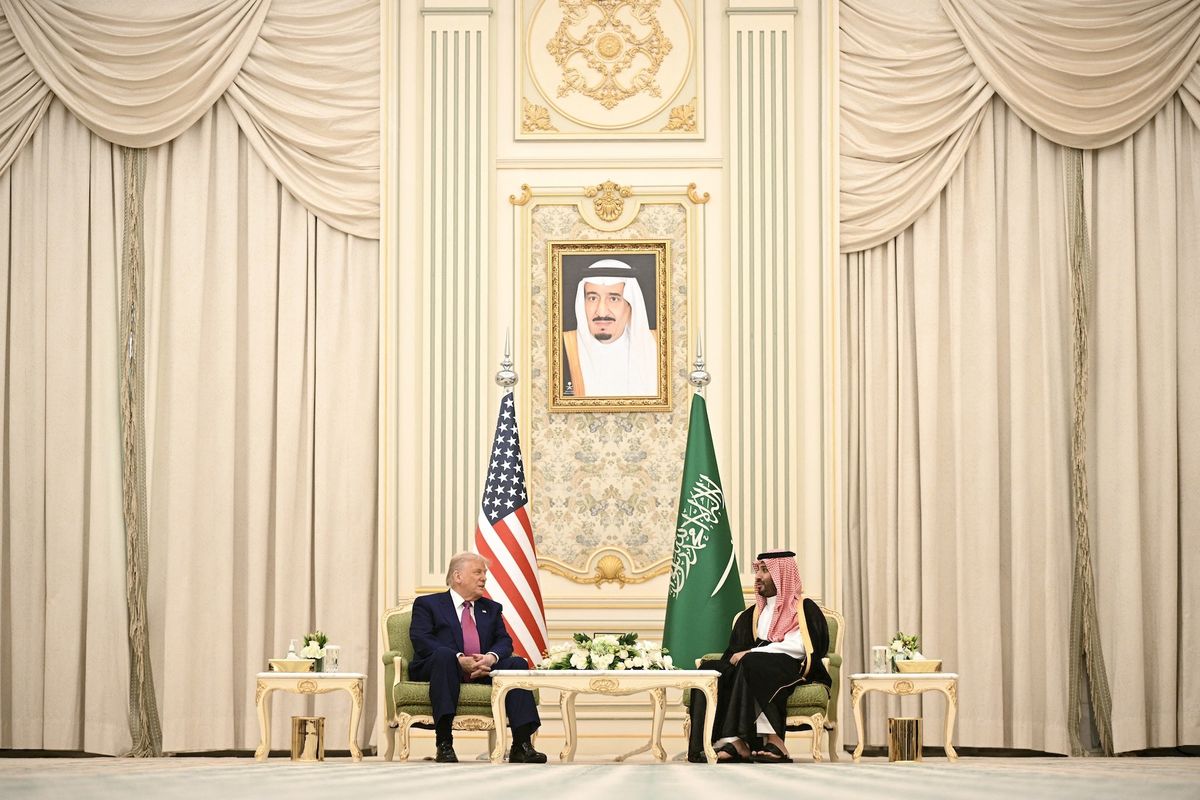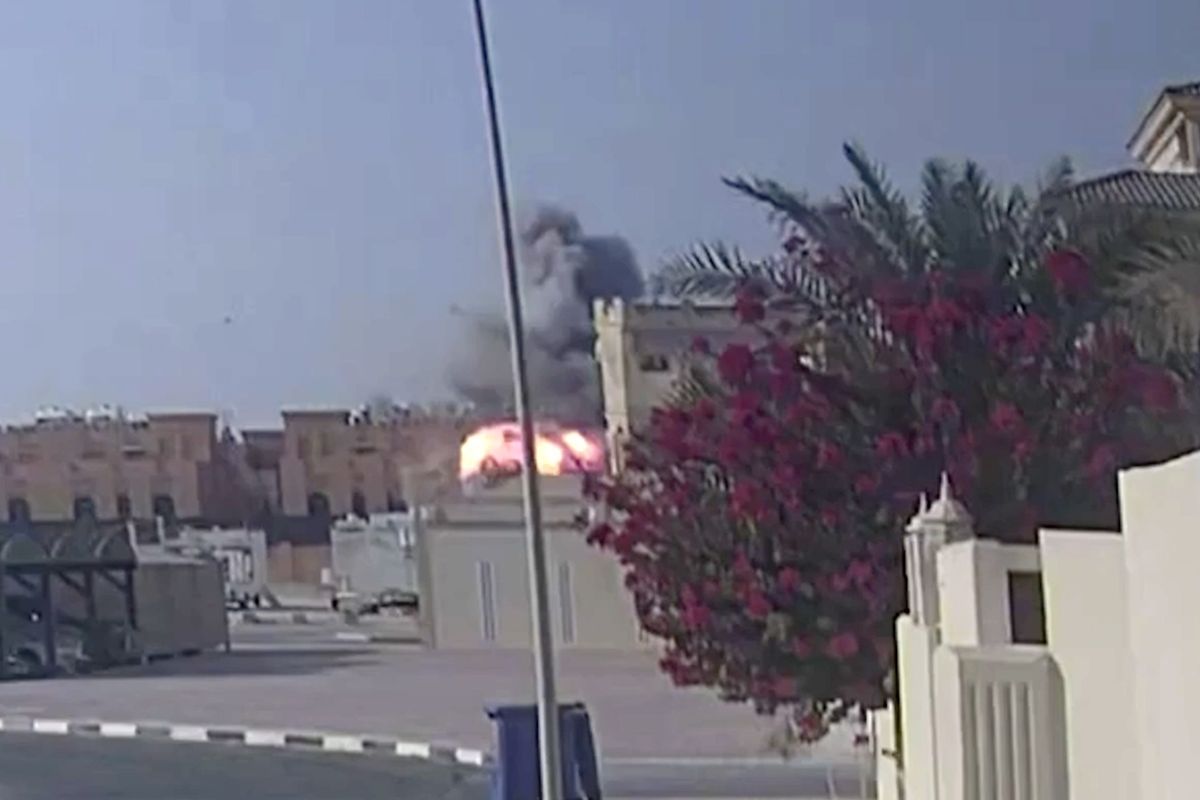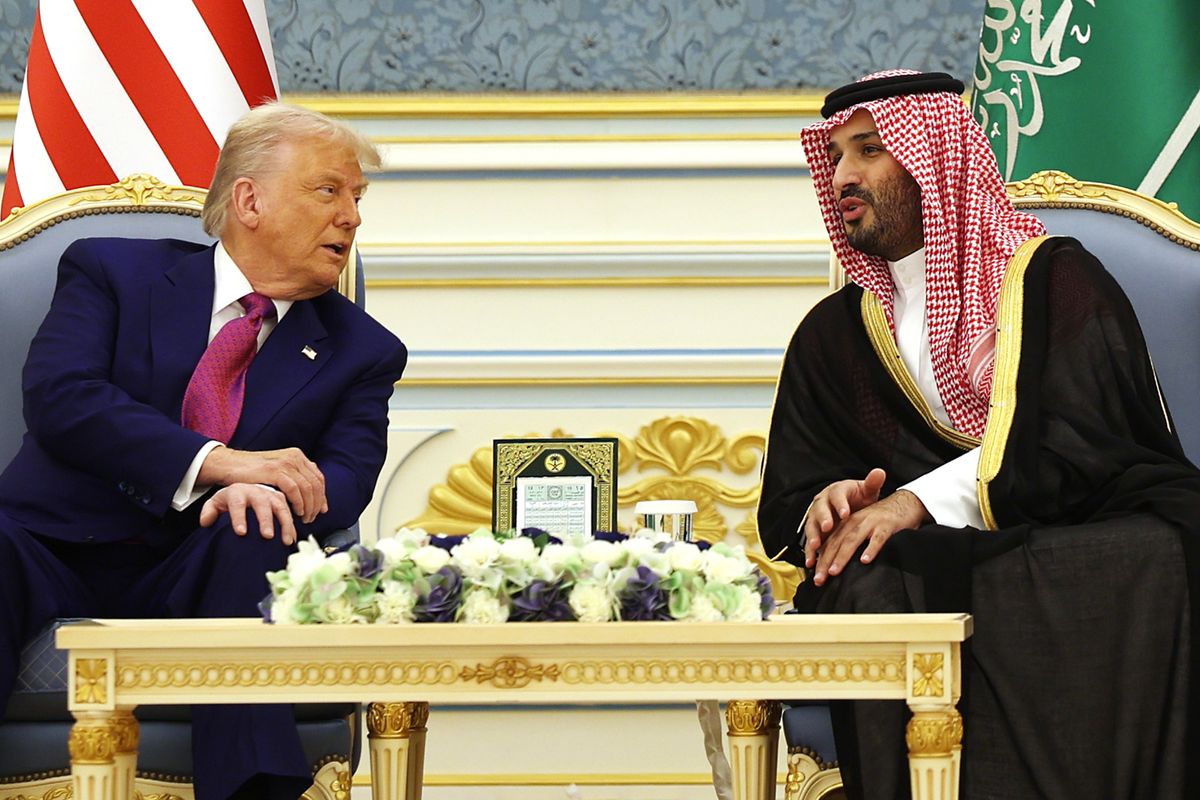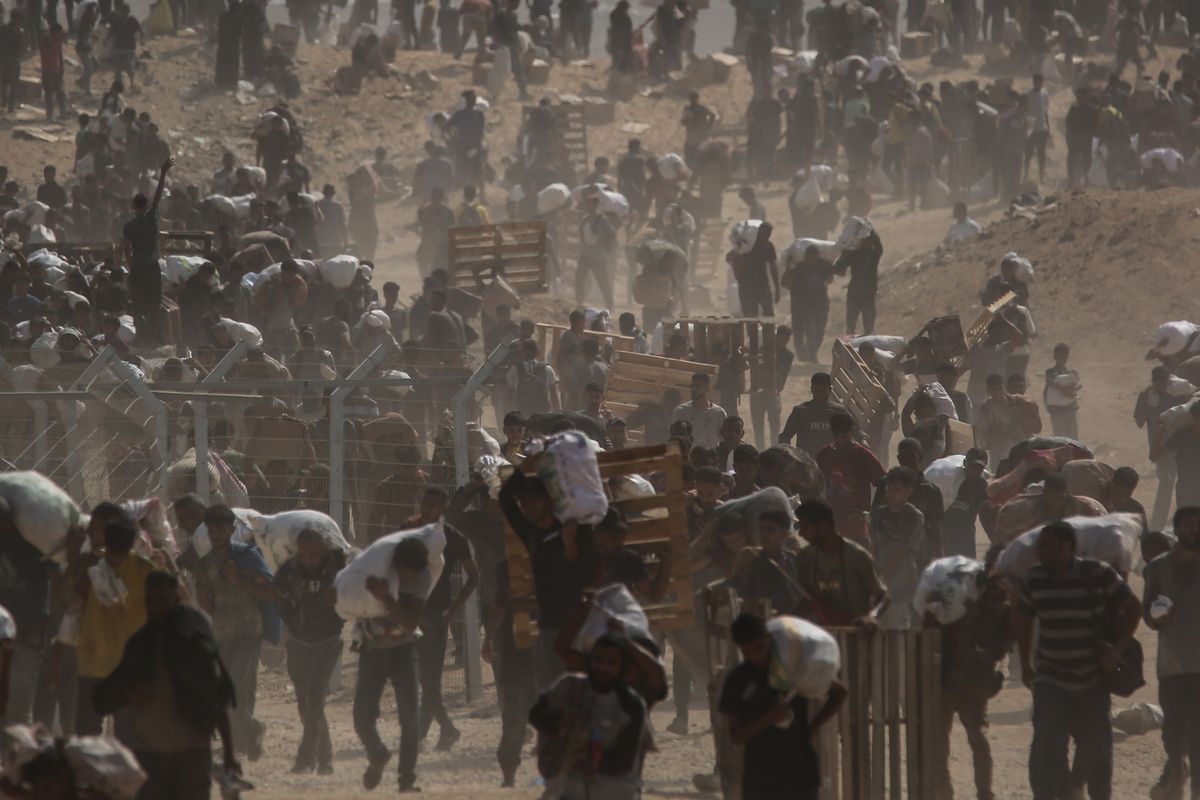The Cipher Brief’s Bennett Seftel sat down with Emad Kiyaei, Policy Advisor at the American Iranian Council to discuss Iran’s recent elections, U.S. President Donald Trump’s trip to the Middle East, and how Iran could react to the establishment of an “Arab NATO.”
The Cipher Brief: Leading up to the Iranian presidential election, polls showed incumbent President Hassan Rouhani and main hardline rival Ebrahim Raisi competing in a tight race. Were you surprised that Rouhani won a decisive victory, with 57 percent of the vote, compared to Raisi’s 38 percent?
Emad Kiyaei: This was a nail-biting and unpredictable election. While the vetting process by the powerful Guardian Council ensures that all presidential candidates are devoted to the principles of the Islamic Republic, the elections in Iran have historically been difficult to predict, as the race is genuine, with candidates having wide ranges of political leanings. The polls did indicate a tight race, but they also revealed that a substantial number of voters were undecided. A win for Rouhani required convincing a vast number of voters to extend his mandate of pressing forward with moderate economic and diplomatic policies. One key factor that carried Rouhani to a landslide victory was the endorsement from key figures in the reformist movement, such as former President Seyyed Mohammad Khatami, as well as leaders of the Green Movement who are currently under house arrest, such as former Speaker of Parliament Mehdi Karrubi and former Prime Minister Mir Hossein Mousavi.
TCB: What does Rouhani’s reelection mean for Iranian foreign and domestic policy in the future?
EK: President Rouhani's first term focused on two key deliverables: resolving the dispute over Iran’s nuclear program and revamping the economy. These issues were largely intertwined as the wailing economy faced not only fiscal and monetary challenges but also was under the most comprehensive international sanctions. Rouhani managed to achieve the historic 2015 Nuclear Accord with the world powers through diplomacy that removed key international sanctions, and since then, there have been encouraging signs for the revival of the Iranian economy.
During his second term, Rouhani’s government will continue to face daunting domestic and international challenges. Chiefly amongst them will be to accelerate efforts to revive the economy through integrating the country into the global system while addressing endemic problems such as corruption and mismanagement. With a strong public mandate, he may have the resolve to deliver on his promise of greater social and political freedoms, with even going as far as challenging the conservative-dominated judiciary.
In the international arena, Rouhani will have a full plate, with rampant regional instability, the fight against terrorism, heightened rivalry with neighboring Saudi Arabia, and a hawkish government in Washington bent on reversing Obama-era Iranian engagement policy and threatening the sustainability of the Nuclear Accord. The foreign policy priorities, then, for the Rouhani administration will not only aim to cement relations with key European and Asian trading partners but also to mend relations with Persian Gulf Arab states. This will require considerable political will and confidence-building measures on both sides of the Persian Gulf. as the current zero-sum game will only lead to further regional instability fought through proxy wars in Syria, Iraq, and Yemen with the possibility of spilling over to other fragile states.
Finally, in his presidential campaign, Rouhani sought to bring an end to all sanctions on Iran. This could signal a desire for Tehran to revisit the possibility of a “grand bargain” with the United States. If President Trump has an appetite for making deals, then Rouhani’s second term could offer a golden opportunity.
TCB: Raisi was touted as a potential successor to Iranian Supreme Leader Ayatollah Ali Khamenei. How could his electoral loss affect his chances? Could Rouhani possibly be considered as a successor to Khamenei?
EK: While Raisi lost the election, he did manage to garner 15.7 million votes (38 percent), propelling him onto the national political platform and [improving his chances as] a possible candidate to succeed Ayatollah Khamenei. At the same time, Rouhani too has increased his chances with his decisive victory. That said, there are two caveats to keep in mind. First, clergymen in Iran tend to live for a very long time, and therefore, dire predictions of Ayatollah Khamenei’s imminent passing may not come to fruition anytime soon. Second, regardless of whether Rouhani or Raisi has a chance at the top job in Iran, there are other hopefuls amongst the 88-member Assembly of Experts who will ultimately decide who will be appointed as Iran’s next Supreme Leader.
TCB: Prior to the election, it seemed that Khamenei supported Raisi and even took jabs at Rouhani. Does this election have any impact on the power and influence held by the Supreme Leader?
EK: The Supreme Leader is the ultimate decision maker in key domestic and foreign policy of Iran, and that will continue under the Rouhani Administration. However, the president still holds great sway in the trajectory of the country. Rouhani appears intent on pointing Iran towards more openness and advancing moderate socioeconomic and political policies.
In addition, the municipal elections that were held at the same time saw moderates win all 21 seats in the capital Tehran for the first time in 14 years. In combination with a moderate-dominated Majlis or Parliament, Rouhani has an opportunity to chip away power from the conservative camp that includes the Iranian Revolutionary Guard Corps, members of the country’s judiciary system, and the office of the Supreme Leader. These factors will place pressure on the Supreme Leader to be more flexible in allowing Rouhani to press ahead with his moderate agenda, particularly if the public continues to back his efforts.
TCB: How does Iran view the proposition of creating an “Arab NATO?” What type of response could this invoke from Iran?
EK: First of all, the whole idea of the Gulf Cooperation Council (GCC) – the compilation of six kingdoms or sheikhdoms – was created post-1979 as a reaction to Iranian revolution. If you look at the stages of the GCC and how the countries integrated their economies and defense and security mechanisms, the idea of an “Arab NATO” has been around for decades. That’s number one. It’s not a new idea.
The concept of the militarization of the Middle East, specifically in the Persian Gulf, is also not new, especially following the first Gulf War and obviously in the second Gulf War, or the 2003 U.S. invasion of Iraq. We’ve seen that a concentration of U.S. forces, or allied forces, or Western forces, in the Persian Gulf has been consistently present. Their numbers have shifted up and down, but nevertheless, the U.S. military presence in the region has always been there. That coalition, between U.S. forces and the GCC, or an “Arab NATO,” is something that’s not signed on paper but does already exist in reality on the ground.
From an Iranian perspective, this once again goes back to the first argument that Iran has made since the early 1980s and more aggressively in the 1990s, which is that security in the Persian Gulf cannot be dictated by foreign powers. At the end of the day, the regional countries must come together, including Iran, and come up with a regional security apparatus or mechanism that works best for them. To Iran, the emboldened approach undertaken by the Trump Administration in Riyadh sitting down with the Arab and Muslim leaders – and obviously Iran was not there – seems as though everything is targeting one bogeyman, in this case Iran.
It’s sort of like a silver bullet that President Trump believes that he can somehow bring stability and security to the region by pouring more arms into the region, but in reality, that has never worked, if we look at the historical precedent. From the Iranian leadership’s perspective, they believe that this just increases the financing from the rich coffers of the Gulf Arab countries.
Number two, it deviates from the core and root reasons of the instability in the region, which is not necessarily Iran, but a diverse number of issues.
Finally, Iran sees the aggressive move of the GCC and the Americans militarizing the Persian Gulf as a direct threat to Iran. It gives weight to those elements within the Iranian leadership who’ve long-argued that the United States’ primary purpose is ending the revolutionary nature of Iran and regime change. In a sense, the Iranian leadership is seeing that the U.S – after a very brief period under the second term of former U.S. President Barack Obama – has now reverted to a regime change policy. This will obviously have its own implications in how Iran plays its cards in the region.
TCB: During speeches in Riyadh, both Saudi King Salman and President Trump called Iran a leading state sponsor of terror. What are responses inside Iran to such a billing?
EK: From the Iranian leadership point of view, their support for Hamas and Hezbollah is within the revolutionary doctrine of the Islamic Republic, which states that the establishment will support oppressed groups and those who seek their own legitimate rights of sovereignty. In this case, the support for Palestinians is based on that whether that may be humanitarian or military. The same goes in Lebanon.
Beyond the extension of Hamas and Hezbollah, the more recent issues are Iran’s support for the Houthis in Yemen, some of the Popular Mobilization units in Iraq, and, obviously, the Assad government in Syria. The Iranians don’t view Hamas and Hezbollah or the Houthis as terrorist organizations, so support for those groups is legitimate in their eyes.
Who does the Iranian leadership actually consider the number one global sponsor of terror? They consider the U.S. the number one supporter of terrorism. The Iranians look at the recent $100 billion in weapons sales to Saudi Arabia as a notion that the U.S. is the promoter of the means of terrorism by supporting states that are at the root of this expansion of terrorism.
Both the U.S. and Iran agree that ISIS, which is the most globalized nature of terrorism, and al Qaeda are terrorist organizations. We also very much know that the source of their finances comes from the GCC and other Arab countries. Further, we know that the ideology of ISIS and al Qaeda comes from an extreme form of Islam, a very narrow interpretation, which is found in followers of Wahabism or an extreme form of Salafism.
Iranians are asking the U.S., “Who are you calling a supporter of terrorism, when you are going through the bastion of terrorist nations supporting these groups?” It’s sort of like a hypocrisy that they see, and one that they know will not alleviate the real fight against terrorism that the united international front is battling.
They always highlight the facts of 9/11; if that’s the turning point for the U.S. when the War on Terror began, then 15 out of the 19 perpetrators of 9/11 were Saudi, and there wasn’t one Iranian involved in the planning, financing, or initiation of that attack. In a sense, Iranians can poke little holes in these arguments.
At the same time, from the Iranian public’s point of view, there is a growing concern that Iran’s support for Hezbollah, Hamas, the Houthis in Yemen, and even the government of Bashar al-Assad in Syria, as well as its involvement in Iraq, is draining the country’s finances. Iran has very little to show for it in terms of returns, whereas the international sanctions are based on reservations about Iran’s role in the region. The Iranian public says, “We are not getting anything out of this, why are we doing this? We should be focused on our economic revival, on Iran’s role in the international community more as a constructive player rather than a destructive player, and on working on our relationship with the West and specifically the U.S.”
To normalize its relationship, Iran has to make some sacrifices. The Iranian public believes that maybe relaxing its support for such groups will not necessarily be that bad for Iran.












